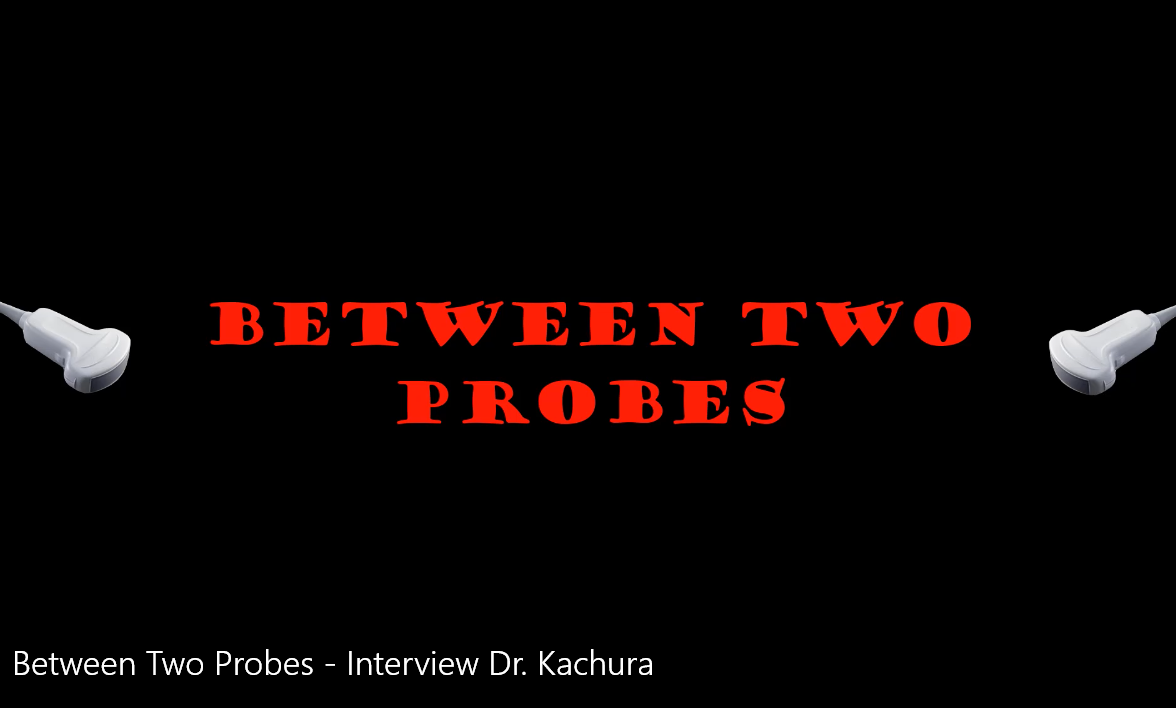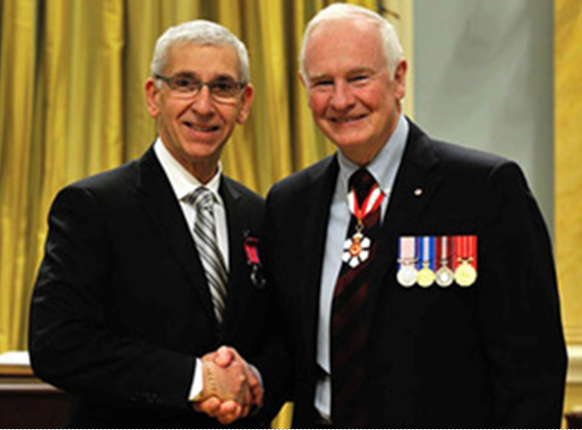Access Menu
Interventional Radiologist | Niagara Health
CAIR WIR Spotlight - Dr. Ethel Rivas Zuleta
CAIR WIR Spotlight - Dr. Rebecca Spouge
CAIR WIR Spotlight - Dr. Elizabeth Dave
CAIR WIR Spotlight - Dr. Aida Ahrari
CAIR WIR Spotlight - Dr. Fiona Anyumba
CAIR WIR Spotlight - Dr. Alda Tam
Call for CAIR Award 2024 Nominations
Combined Interventional/Body Radiologist – Hamilton General Site, ON
Dr. Sinclair and Dr. Woodley-Cook had the pleasure of speaking with one of their fellowship mentors, Professor John Kachura. Below are snippets from their interview, edited with minor revisions (with permission).
(Teaser transcript below)
 Dr. John Kachura completed his diagnostic imaging residency at the University of Toronto in 1994 and fellowship in vascular and interventional radiology at University Hospital and Boston City Hospital in Boston, Massachusetts in 1985. He is a Professor in Medical Imaging at The University of Toronto and a Staff Radiologist in the Department of Medical Imaging at the Joint Department of Medical Imaging at UHN/Mt. Sinai in Toronto. Dr. Kachura is the vascular and interventional radiology Fellowship Supervisor at the Joint Department of Medical Imaging in Toronto and has co-authored over 60 peer-reviewed papers. Dr. Kachura was the President of the Canadian Interventional Radiology Association (CAIR) between 2011 – 2013. His professional and research interests include but are not limited to interventional oncology and obstetrical interventions.
Dr. John Kachura completed his diagnostic imaging residency at the University of Toronto in 1994 and fellowship in vascular and interventional radiology at University Hospital and Boston City Hospital in Boston, Massachusetts in 1985. He is a Professor in Medical Imaging at The University of Toronto and a Staff Radiologist in the Department of Medical Imaging at the Joint Department of Medical Imaging at UHN/Mt. Sinai in Toronto. Dr. Kachura is the vascular and interventional radiology Fellowship Supervisor at the Joint Department of Medical Imaging in Toronto and has co-authored over 60 peer-reviewed papers. Dr. Kachura was the President of the Canadian Interventional Radiology Association (CAIR) between 2011 – 2013. His professional and research interests include but are not limited to interventional oncology and obstetrical interventions.
CAIR – Thank you for joining us. Tell us how you became Prof. John Kachura
JK – Well, I went to the University of Toronto medical school and graduated in 1989 (a long time ago). I was originally in the Internal Medicine program but my last elective in medical school was Radiology at the Wellesley Hospital, now defunct. I really enjoyed the breadth of material and the intricacies of radiology and I decided to switch. So, after a year of intense medical internship, I switched to Radiology at U of T. I finished my Radiology residency (at U of T) in 1994 and did a fellowship in Boston at Boston City Hospital University Medical Centre for a year and then came back to Toronto working on staff at the Wellesley Hospital for three years before leaving for UHN/Mt. Sinai, where I have been on staff since 1998.
CAIR – Fascinating. Who is or was your mentor and why?
JK – During radiology residency, I enjoyed most of the things we learned but I was unsure in what area to subspecialize. My first rotation through interventional radiology was at Mt. Sinai Hospital during my R3 year with Dr. Murray Asch and Dr. Nasir Jaffer. In fact, Dr. Murray Asch was my first mentor. As soon as I started the rotation with Dr. Asch, I knew VIR was what I wanted to do. In Boston, I had a couple of mentors: The Chair of Radiology and Radiologist-in-Chief at the time, Dr. Joseph T. Ferrucci II and the head of VIR at the time, Dr. Kent Yucel. Back in Toronto, I would consider Dr. CS Ho and the recently departed Dr. Ken Sniderman as well.
CAIR – What part of IR were you drawn to?
JK – I liked using my hands to do procedures. I was fairly good at basic procedures during my internship and it seemed satisfying to do something to help someone in the immediate term. Although I enjoyed the complexity of internal medicine, you had to deal with a lot of chronic conditions, for which there were no easy answers.
CAIR – Would you consider yourself a “vascular” or “body” IR (or both)?
JK – I would consider myself both. Early on in the stenting days, I would scrub in with the vascular surgeons to insert stent grafts. As interventional oncology progressed in the late 90s and early 2000s, I gravitated towards that and I tend to be involved with more interventional oncology than other areas such as peripheral vascular disease now but I like to do all procedures.
CAIR: Cool! I know this is a difficult question that you have probably never thought of, but how would you describe your favourite catheter?
JK – I like to teach my fellows that the 4F C2 glide catheter is the most versatile catheter known to peoplekind.
CAIR – Do you have a favourite CAIR city?
JK – The first host city was Niagara on the Lake, which produced a lot of memories, which I still remember. CAIR went back a couple of years later. The times there were great. I enjoyed Halifax and I enjoyed Calgary. As long as it’s not in Toronto, I’ll enjoy it.
CAIR – What’s your favourite song to sing at karaoke?
JK – Hidden content. Watch the video.
CAIR – What was your last publication?
JK – I was co-author with Dr. Mafeld of a letter to the editor in CVIR. I was very pleased that the words “Trump” and “fake news” were used. (The link can be found here).
CAIR – What is your favourite closure device?
JK – My first two favourite closure devices are this and this (shows us the 2nd and 3rd digits of his right hand). Hopefully on the fellow’s hand.
CAIR – What if there is operator fatigue?
JK – Then you have another hand. Or another fellow…
*For the remaining riveting questions, watch the full video, click on the image below*
Dr. John Kachura completed his diagnostic imaging residency at the University of Toronto in 1994 and fellowship in vascular and interventional radiology at University Hospital and Boston City Hospital in Boston, Massachusetts in 1985. He is a Professor in Medical Imaging at The University of Toronto and a Staff Radiologist in the Department of Medical Imaging at the Joint Department of Medical Imaging at UHN/Mt. Sinai in Toronto.
The VIR community recently lost one of its pioneers and mentors, Dr. Kenneth Sniderman, who passed away in April 2021 following a battle with cancer. Below are two statements from Dr. Simons, who worked alongside Dr. Sniderman and Dr. Bernstein, a VIR fellow that trained under Dr. Sinderman.
It became clear early on in VIR fellowship that Dr. Sniderman had many passions in life. Two of these passions included teaching and patient care. He would literally sacrifice himself for both passions, whether it was during his Friday morning teaching rounds despite being in pain from a recent fractured hip or giving patients his personal mobile number and getting calls throughout the night regarding post-UFE pain management.
As part of the inter-professional health care team, the RN will practice according to the nursing practice expectations set by William Osler Health System, the regulatory practice standards of the College of Nurses and the legislative requirements set by the Regulated Health Professions Act (RHPA).
"We are thrilled to have such talented and respected leaders on our board and we look forward to working with them as we continue to serve our members and the entire IR community while leading the vision of CAIR with dedication and passion." Luciana Nechita, CAIR Executive Director
CAIR's board of directors and staff are horrified and saddened by the act of hatred and Islamophobia that happened Sunday evening in London, Ontario.
CAIR's board of directors, staff, and the entire IR community stands with all Indigenous Communities, especially the Tk’emlúps te Secwépemc First Nations, in mourning the tragedy of the 215 children’s lives taken at the hands of the Canadian residential school system.
These intentional or unintentional verbal, behavioral or environmental actions are exercised on a more interpersonal level and may cause feelings of discomfort, devaluation and insecurity in their targets.
New interventional radiology suites allow medical experts to treat some diseases without major surgery.
The Canadian Association for Interventional Radiology (CAIR) will be holding a virtual Annual General Meeting (AGM) for its voting members in good standing on June 14th, 2021 at 7:00 pm EST.


